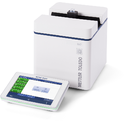Figure 3. Cuvette changers are low-throughput but have low time-to-results and use less sample. Flow cells are high-throughput and have very low operation requirements for the user, but can take longer per sample, while also using more sample.
For lower-throughput needs or constrained samples, cuvette changers offer an efficient alternative to flow-cell autosamplers. METTLER TOLEDO’s CuvetteChanger automates up to eight cuvettes per run, so blanks, calibration standards, and samples can be loaded together and measured in a single sequence. Autosampler/flow-cell setups typically consume more material, so when available volume is limited (e.g., <8–10 mL), a CuvetteChanger can be the better fit. Flow setups can also struggle to transfer more viscous samples effectively.
Increased time required for cleaning and rinsing a flow cell can also increase time-to-results, especially with high protein concentration samples. Cuvette changers decrease time-to-reults, but require increased operator time compared to an autosampler (see Figure 2).
Finally, consider concentration and optical path length: InMotion autosamplers support 1–50 mm path lengths for very dilute samples, whereas the CuvetteChanger accommodates 10 mm or shorter cuvettes, aligning well with typical QC concentrations while keeping operation simple and sample usage low.
















